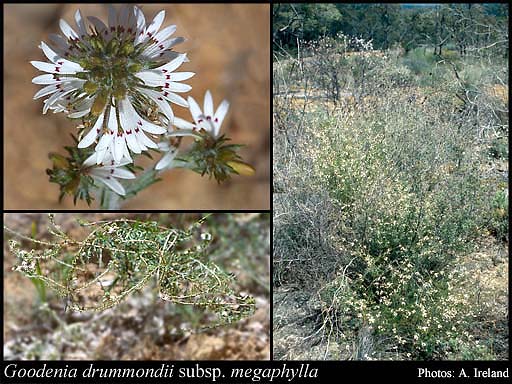- Reference
- Nuytsia 12(2):234-235 (1998)
- Conservation Code
- Not threatened
- Naturalised Status
- Native to Western Australia
- Name Status
- Current
Erect shrub, 0.28-1.3 m high, longest leaves to 7.8 cm long, entire; flowering spike to 44 cm long. Fl. white, Nov to Dec or Jan. Shallow granitic soil or loam over laterite. Granite outcrops, wandoo woodland.

Scientific Description
Stems ribbed. Leaves compressed, 7-25 mm long, 0.5-1 mm wide, Indumentum absent (leaves glabrous); margins entire. Bracteoles present, 1-1.5 mm long, glabrous. Pedicel pedicellate, Pedicel length the pedicels 0.5-1 mm long, glabrous. Calyx lobes present, Calyx length 0.7-1 mm long, glabrous. Corolla white, 5-8 mm long, without auricles, not spurred, glabrous on the outside, glabrous on the inside; central lobes 2.4-3.5 mm long, with wings; outer lobes 3-6.5 mm long, wing present on both sides and clearly unequal, 0.1-0.3 mm wide on the narrower side, 0.2-0.4 mm wide on the broader side. Anthers free. Ovary inferior, not gibbose; style 4-5.2 mm long, hairy; indusium single, hairy; ovules more than two. Flowers in January, November and December. Occurs in the Avon Wheatbelt (AW) and Jarrah Forest (JF) IBRA Region(s), of the South West (SW) Botanical Province.
Distribution
- IBRA Regions
- Avon Wheatbelt, Jarrah Forest.
- IBRA Subregions
- Katanning, Northern Jarrah Forest.
- Local Government Areas (LGAs)
- Armadale, Beverley, Boddington, Brookton, Cuballing, Kalamunda, Northam, Pingelly, Toodyay, Wandering, York.